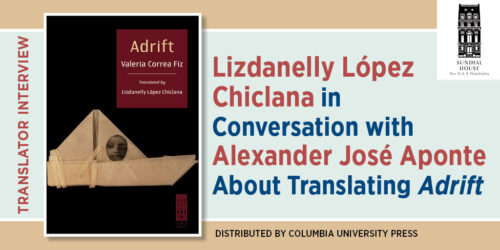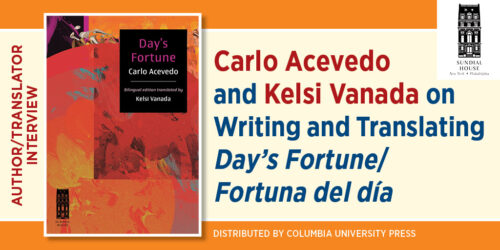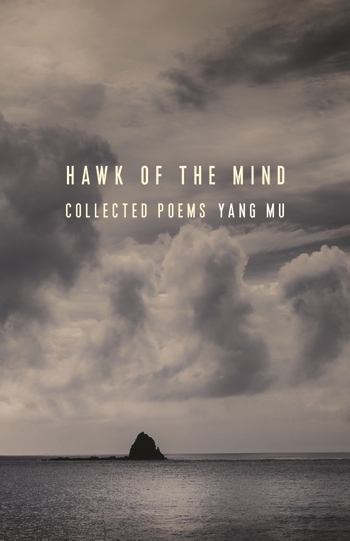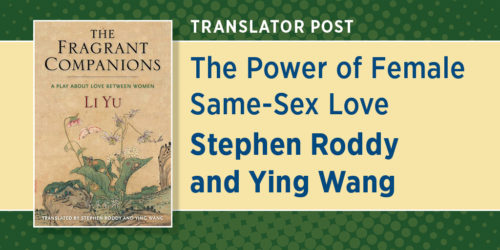John Timothy Wixted on The Poetry of Yuan Haowen
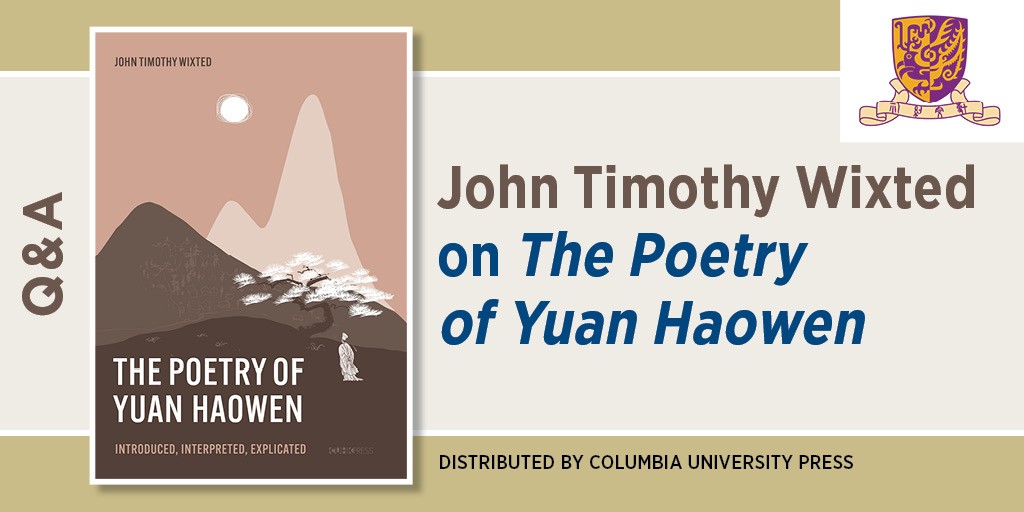
Renowned for his poignant reflections on the tumultuous decline of the Jin dynasty and the subsequent Mongol conquest of North China, Yuan Haowen (1190–1257) is regarded as one of the greatest poets in Chinese literary history. His poetry resonates with a profound sense of loss and a fervent desire to document his time’s cultural and historical legacy, offering readers the depth of his sorrow and his remarkable linguistic creativity and intellectual breadth. John Timothy Wixted’s comprehensive treatment of 150 of Yuan Haowen’s poems provides lucid introductions, interpretations, and translations alongside the original texts, illuminating the rich layers of meaning within Yuan Haowen’s work. In this Q&A, Wixted offers insights into the unique qualities of The Poetry of Yuan Haowen: Introduced, Interpreted, Explicated and the enduring relevance of Yuan Haowen’s poetry in the context of historical and cultural discourse.
Q: What inspired you to become a student and scholar of Chinese and Japanese language and literature?
John Timothy Wixted: My parents much respected scholars and scholarship. They were both M.D.s (my mother, Univ. of Chicago, 1932!). In high school I was an AFS (American Field Service) exchange student to Austria—a pivotal experience. And my public school teachers in Mishawaka, Indiana (not far from the University of Notre Dame), were of an especially literate, dedicated generation. I have dedicated my book in part to them “for their efforts to instill respect for study, discipline in writing, and love of learning.”
I have written books on both Chinese and Japanese language and literature. In this, I was doubtless influenced by Burton Watson, the Columbia University Press author who was my M.A. adviser at Stanford. His friend, the distinguished David Hawkes at Oxford, suggested I work on Yuan Haowen (1190–1257) as my doctoral dissertation topic. In addition to classical and modern Chinese, I came to him with a good reading knowledge of Japanese, German, and French—all indispensable for the study of Song–Jin–Yuan-period China. Later I was especially fortunate to know and learn from the two great Yuan Haowen scholars in Japan, Oguri Eiichi and Suzuki Shūji, as well as the senior Yoshikawa Kōjirō.
Q: Who is Yaun Haowen, and why is he so important to the canon of Chinese literature?
Wixted: Yuan Haowen is perhaps the greatest Chinese poet of the last 800 years. But rather than simply repeat or assert such praise, I attempt to communicate why he has been held in such high regard—by introducing, interpreting (via translation), and explicating 150 of his poems.
Yuan is especially famous for his poems lamenting the “death and disorder” (sangluan) that accompanied the decline, fall, and aftermath of the Jin dynasty, when the Mongols took over North China. Reading Yuan’s poems, one feels his intense pain at the demise of the dynasty and his deeply felt need to preserve the historical and cultural record of civilization as he knew it. One also comes to appreciate other dimensions of the poet: his contemplative nature, his sense of shared suffering with those around him, his lifelong attraction to the life of retirement, and his openness to a wide range of friends and acquaintances. The poems are distinguished by breadth of learning, linguistic creativity, and allusive depth. They also reveal an abiding sense of irony and occasional self-directed wry humor. It is no coincidence that Yuan Haowen is often paired with Du Fu, as two intensely humane great writers deeply imbued with the poetic tradition and profoundly concerned with the world around them.
Q: What differentiates your book about Yuan Haowen from other books on Chinese poetry?
Wixted: What distinguishes this volume from other books on Chinese poetry is, first of all, the format in which the poems are presented. Poems are not simply translated, with little or no explanation. Their background is outlined in brief, their import is explained, the phrasing used is clarified, and the allusions employed are elucidated. This is all done in clear, jargon-free English.
Not only are the poems made understandable to readers with little or no knowledge of Chinese language or culture. The explication also helps those well trained in Chinese literature to better appreciate the originals. And since pinyin romanization is supplied for the poems along with the original text, readers at any level of competence in Chinese are given direct access to the original.
For the format, my debt to David Hawkes A Little Primer of Du Fu is acknowledged. The virtues of that work have been expanded: 150 poems are treated instead of 35; much fuller annotation is provided by way of explanatory material; and the poems have been fully translated as well as paraphrased.
As to the quality of the poem renderings, I leave that to others to assess. I have attempted to create an unadorned, gracefully apt style, fitting for a poet like Yuan Haowen, traditionally described as “eschewing over-refinement” and “avoiding superficial prettiness.”
My treatment of the poems reflects close acquaintance with Yuan Haowen’s corpus of over 1,300 poems, familiarity with his ample prose writing, and mastery of the scholarship both on him and on the period in East Asian and Western languages.
Q: Could you clarify what you mean by explicating the text?
Wixted: An example might prove illustrative. A straightforward-seeming poem like the following quatrain—“A Mountain Dwelling” (#1 of 6)—written when Yuan Haowen was twenty-nine and a repeated failure in passing the examinations to become an official, is clear enough as a description of nature:
Bamboo gaunt, crisscrossed by vines;
Flowers obscured, weeds grow rank.
Trees tall, have an air of their own;
Moss sleek, the water makes no sound.
But the poem also serves as political statement and reflection on life. Indeed, its decorously indirect self-reference makes it a tour de force. The two couplets are paraphrased as follows in footnotes on the same page:
In politics and in life, vines suffocate bamboo, and weeds push aside flowers. The noble-minded are gaunt (like the loyal minister, Qu Yuan [343–277 BCE]) and those who would serve with distinction live in obscurity; in the meantime, mediocrities thrive. Such is the situation I find myself in.
Tall trees (i.e. high-minded ones) keep to their ideals, their “air” (feng, i.e. persuasive force) having a positive “manner, attitude, stance” (tai) all its own. The moss below is “lustrous, sleek” (hua) and hence outstanding on its own: it is silent and has no need to “toot its own horn.” Both, I dare say, refer to me.
As with so much Chinese poetry, without explication it is easy to sail right past the words without fully grasping what couplets are saying, the course of the text’s logic, and the import of the poem as a whole.
A further example is provided by “Upon Passing the Former City of Jinyang: Relating Events,” where three time frames are operative. Past figures and events are implicitly contrasted with present circumstances. Without clarification of the background to both, the interplay between them is completely lost. Furthermore, the concrete poetic lines in which it is written, rich in historical and poetic association, have only superficial significance without explication to bring out their depth.
Many of the explanations and paraphrases in the volume are in implicit answer to the questions William Hung (Hong Ye), another of my mentors, would sometimes pointedly ask upon reading my draft renderings: “But what is it saying?” “How does it ‘hang together’?” “How does it fit as part of the greater whole—the poem, the poet, the period?”
Q: Anything else you would like to comment on?
Wixted: I especially appreciate the understanding extended by The Chinese University of Hong Kong Press. They recognized the importance of presenting the poems couplet by couplet—original, pinyin reading, and translation—to help visually communicate the poems’ sense, structure, and sound. They fully appreciated that explanatory material—so central to understanding the poems—should be supplied on the same page as the original and translation (unlike many other volumes on Chinese poetry, where what little explanation that is provided is relegated to an appended notes section that is cumbersome to refer to). The footnotes paraphrase lines or couplets, explicate allusions, cite examples of usage that clarify a passage, or provide other pertinent information. Here they are readily accessible and can be referred to and digested at the same time as the original and translation.
The book itself is attractively designed; the page layout could not be better. The paper and binding are of good quality, and the embossed cloth cover and book’s dust jacket are beautiful.
Categories:Asian LiteratureAsian StudiesDistributed PressesFictionLiterary StudiesNational Poetry MonthNational Translation MonthPoetryThe Chinese University of Hong Kong PressTranslationTranslator Interview
Tags:Chinese LiteratureChinese PoetryClassical Chinese LiteratureCultural LegacyEmotional DepthHistorical SignificanceJohn Timothy WixtedLiterary AnalysisNational Poetry Month 2025National Translation Month 2025Poetic ThemesPoetry CommentaryPoetry InsightsPoetry TranslationThe Poetry of Yuan Haowen

